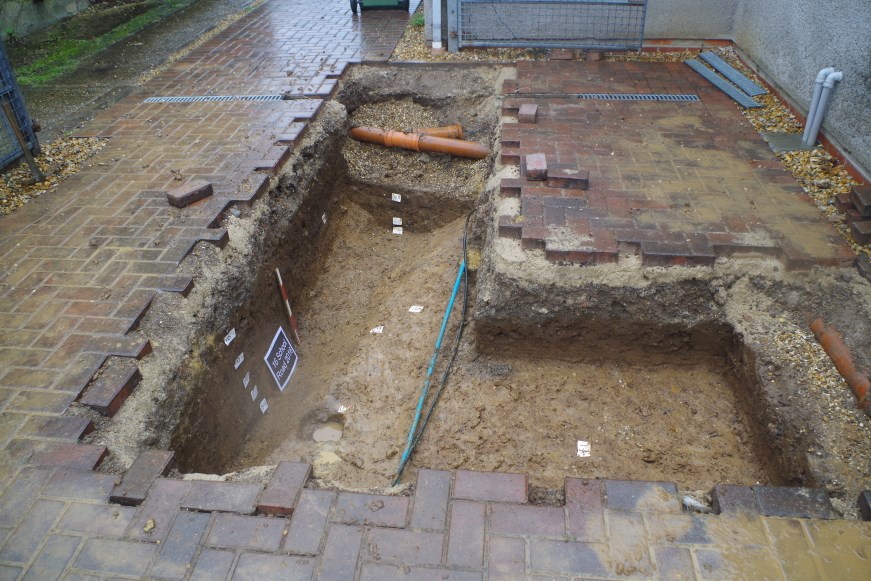Southampton Archaeology Case Studies – Wickham
Archaeological evaluation in Wickham. Assisting with a homeowner’s extension.
A homeowner applied to build a two-story extension and a garage. As the site was in an area known for its prehistoric and Roman archaeology an archaeological condition for an evaluation was a planning requirement.
Southampton Archaeology was engaged to prepare a Written Scheme of Investigation (WSI) and carry out the evaluation. The WSI utilised the Historic Environment Record (HER) and interrogated historic and cartographic evidence, assessing how the development would impact on these heritage assets. The WSI also detailed how the works would be undertaken together with a trench plan. The evaluation trenches were positioned to coincide with the proposed foundations, to assess the archaeological potential but also to clear those areas of archaeologically significant features if they were encountered.
The evaluation trenches were dug to the depth of the foundations given in the planning documents. As a result of this most of the trenches did not go deep enough to expose archaeologically significant deposits. A Roman ditch, possibly a property boundary, was found in one of the trenches. A good group of pottery was recovered from the fills, including local wares and imports, suggesting a late first/early second century date for the final filling of the ditch. The presence of locally produced ‘Wickham ware’ in the fills, suggested its production might have begun earlier than the AD 120 date postulated for the start of that industry.

Roman ditch in one of the evaluation trenches
Southampton Archaeology enjoy assisting homeowners with their extensions and renovations. We understand that often tight budgets need to be adhered to and approach the work in as efficient a manner as possible. At the same time, we know that homeowners want to understand and respect the history of the area they live in. In this case the archaeological work and reporting meant that archaeological impact of the development was reduced to ‘low’. The archaeological condition was fulfilled, and the development proceeded with no further archaeological intervention.


